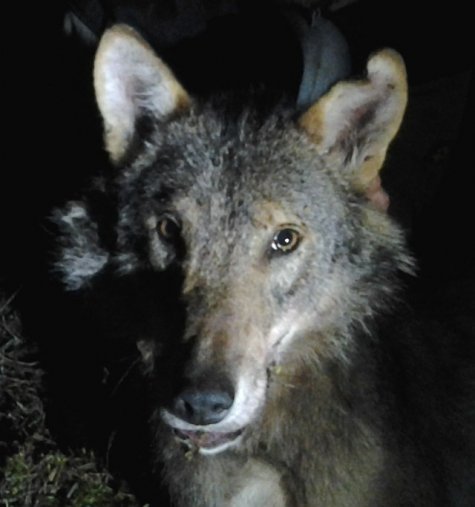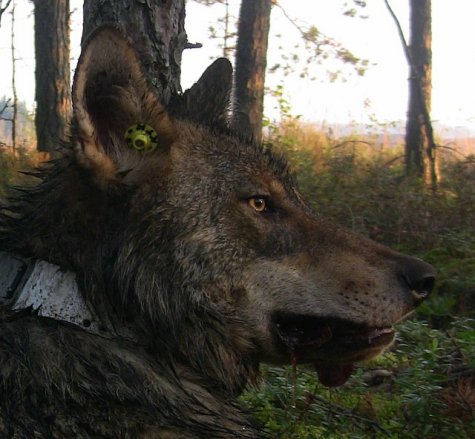A week in the forest - Habe (Beard) and Hall (Grey)
Overview by Peep Männil and Marko Kübarsepp
Translation:SilverT
Old winter is outside – cold weather, frosty nights. Only about a centimeter of fresh snow has fallen to the ground, but during sunny days ravens are already making quite playful sounds. Since the winter solstice, there is an hour`s worth of daylight more.
What do our wolves look like?
The main hue of the wolves living in Estonia is yellowish-grey with darker upper part of the back and tail. Cheeks and the undersides of the throat and abdomen are whitish grey. Most animals have a dark line (so-called paw stripe) along the front of the foreleg.
Female wolves are averaging 114 cm in body length, 70 cm in height and 33...35 kg in autumn-winter weight; respective indicators for male wolves are 124cm, 76cm and 38...45 kg. Depending on circumstances, 1...3 kg of meat will cover a wolfs`s daily energy need. Our wolves mostly feed on hoofed wild animals, such as wild boar, roe deer, elk and red deer; of lesser importance are beavers, hares, small rodents and small predators. With the current abundance of hoofed wild animals, our wolf`s table is definitely well set. Our wolves, who have been equipped with radio transmitters, have been photographed during tagging and the animals are not fully awake after being sedated.
Name: Habe (Beard)
Habe is a male wolf and he was tagged on 23.05.2012, at 2.00 o`clock. During the time of the capture, Habe weighed 40,8 kg. He was 127 cm in body length. Estimated age was three years. Well-fed.
Special markings: a piece, the size of about 3 cm2, is missing from the left ear.
Paw stripes, which are quite common among our wolves, are almost nonexistent in the case of Habe.
Name: Hall (Grey)
Hall is a male wolf and he was tagged on 10.09.2012, at 5.00 o`clock. He had a body weight of 40,2 kg during capture. 124 cm in body length. Estimated age 1,5 years. Paw stripes are well distinguishable and contrasting. Compared to Habe, the hue of Hall`s coat is somewhat darker.
It is common that well-distinguishable paw stripes are directly linked to darker coat. Animals with darker coats (with dark-grey back) also have coats with significantly more yellow hue.
Within the forest week, Eesti Metsaselts (Estonian Forest Society) and Elva City Government announced a wolf-themed drawing competition, „Wolf, the forest ranger“, and a forest story contest for the students of Tartumaa.
How to participate?










